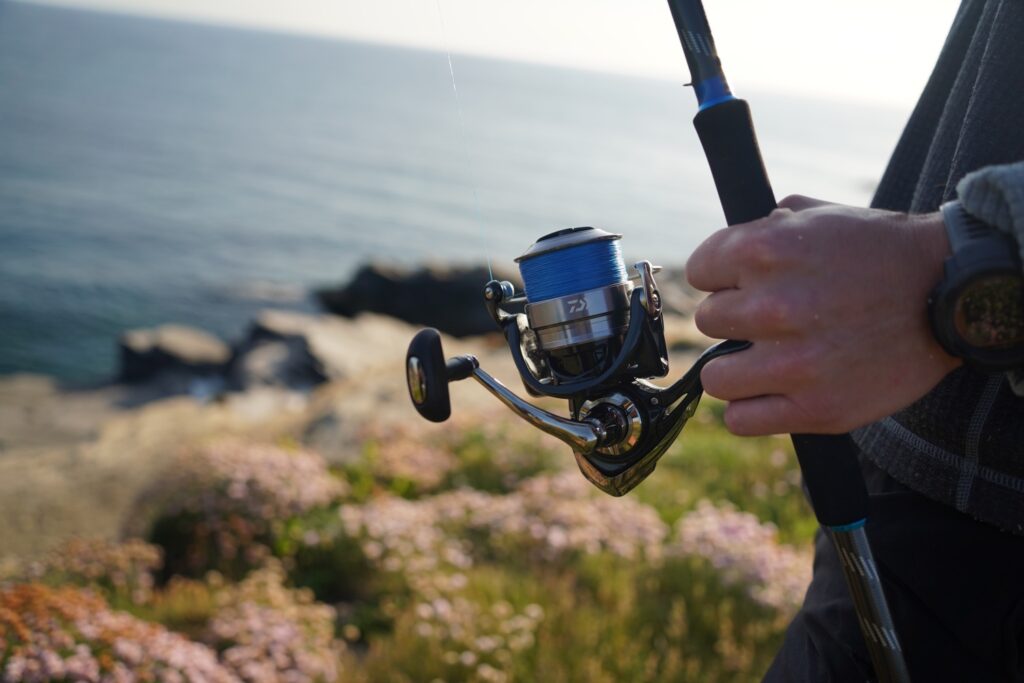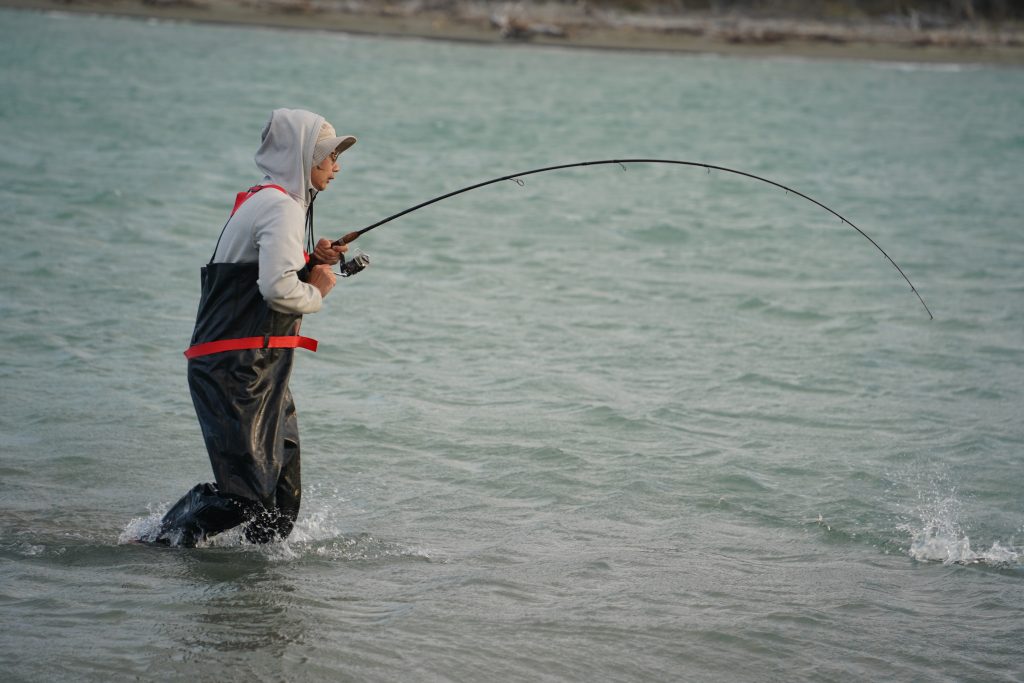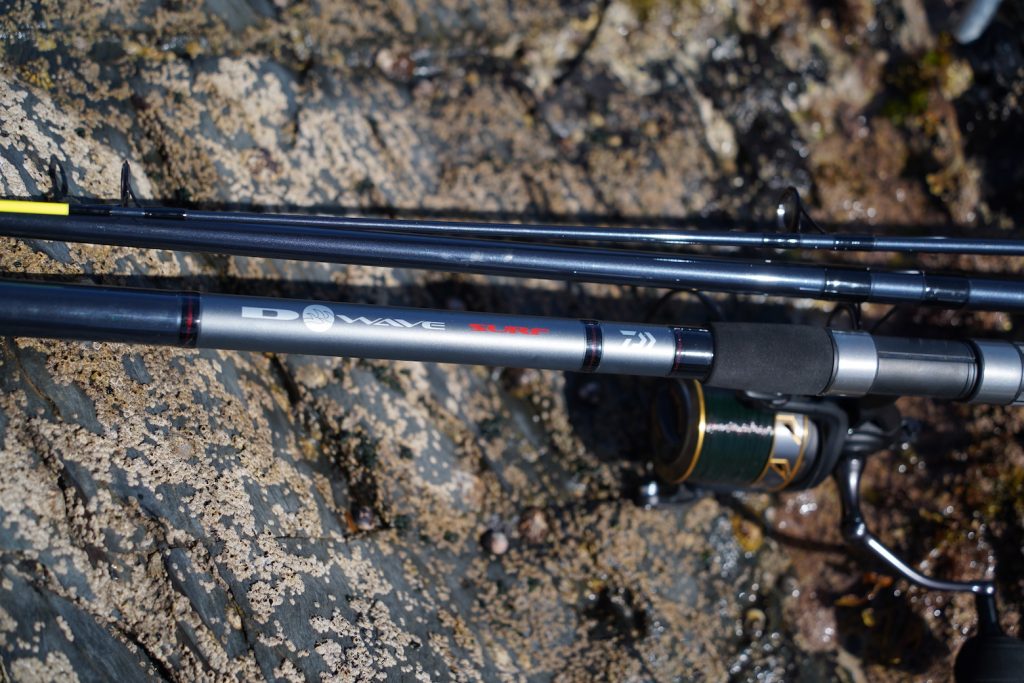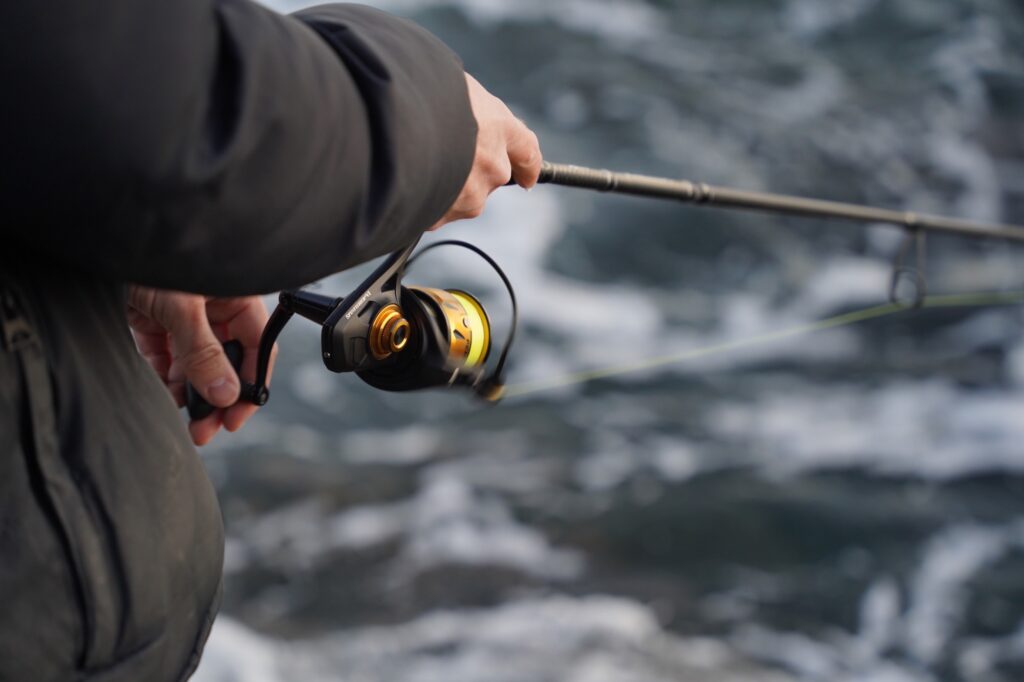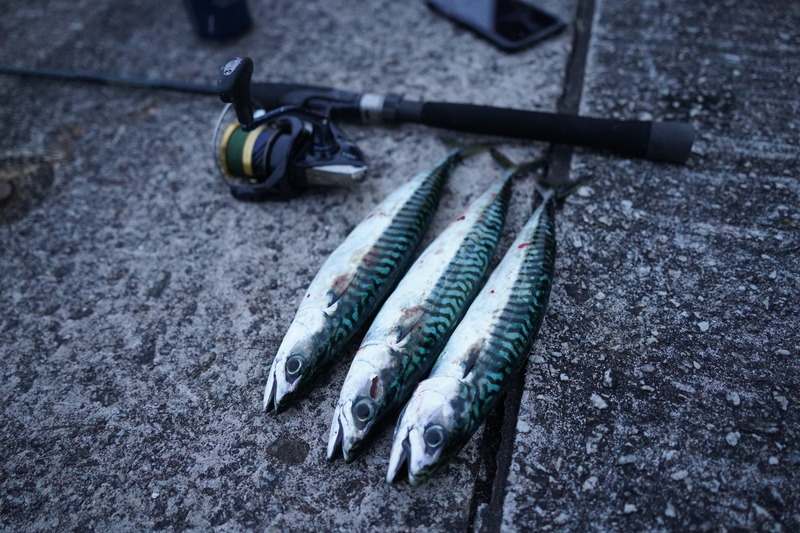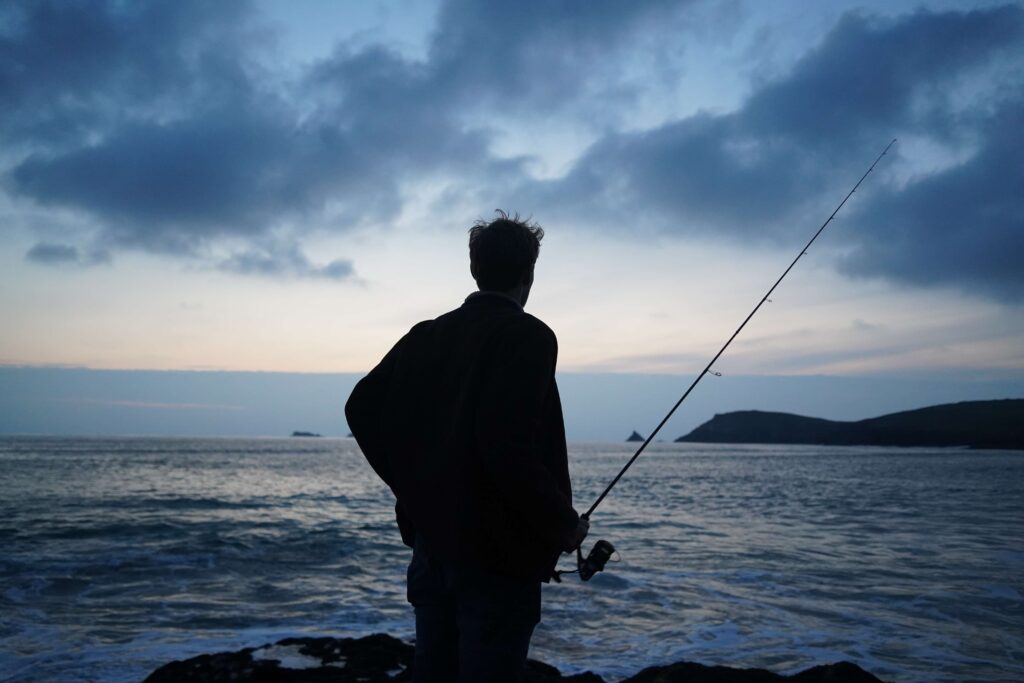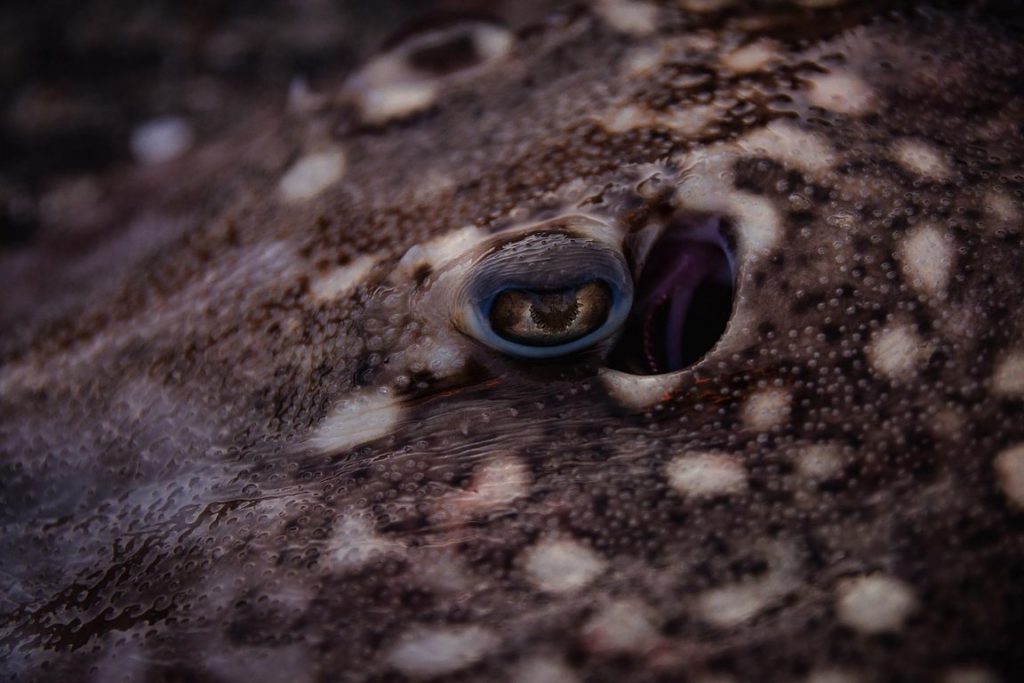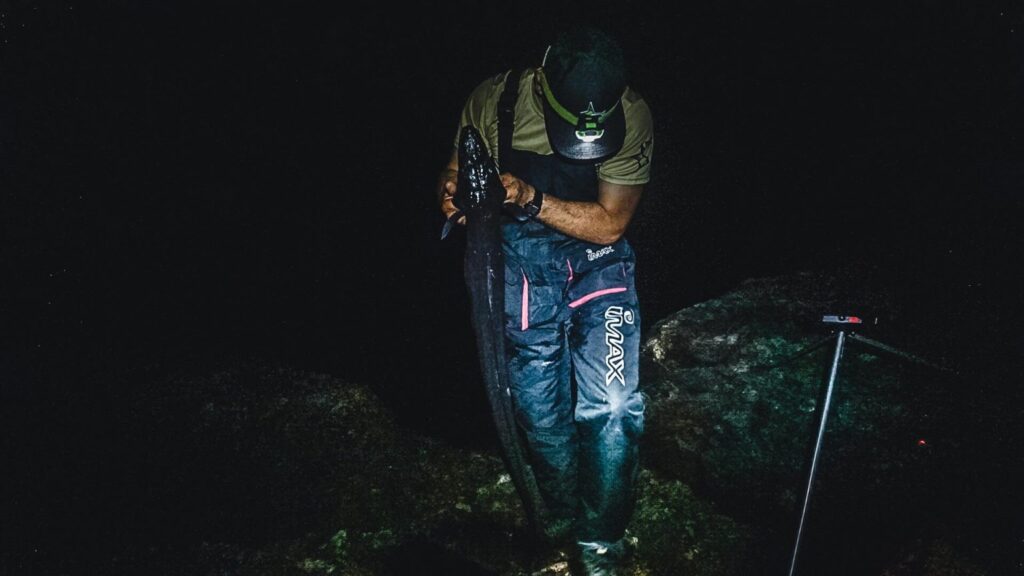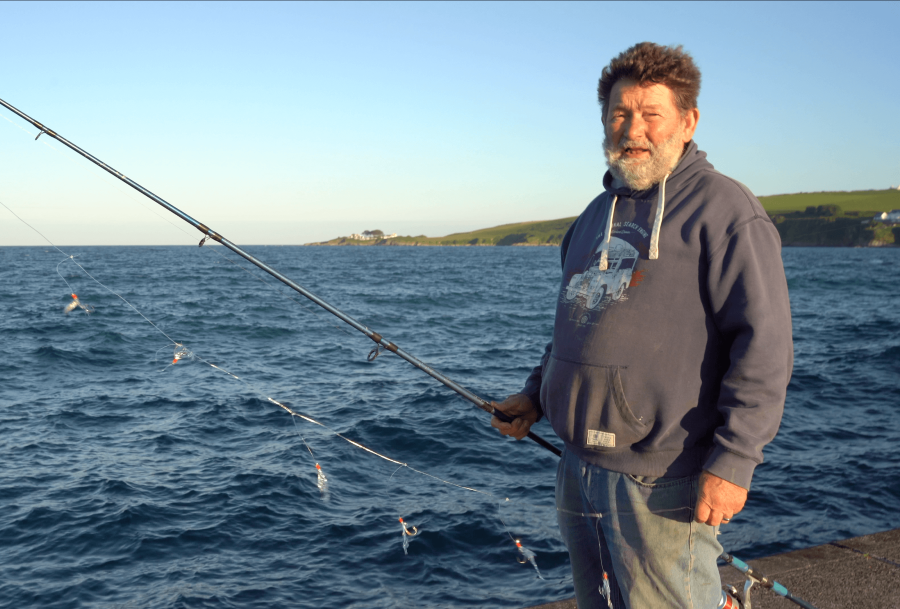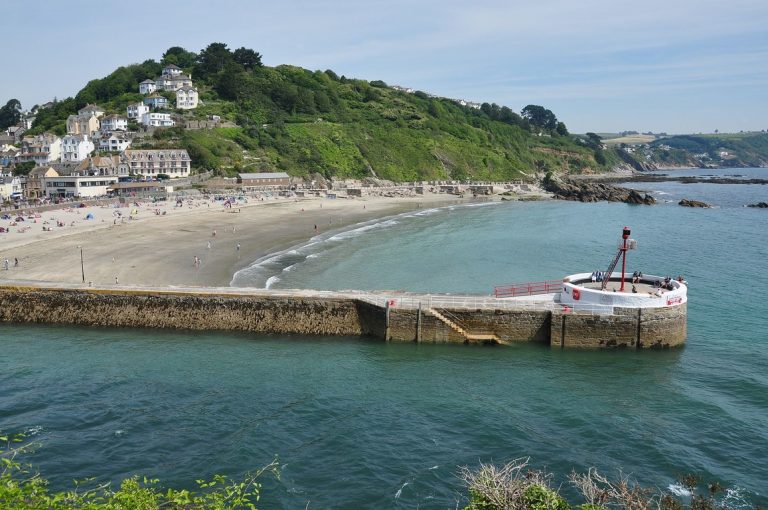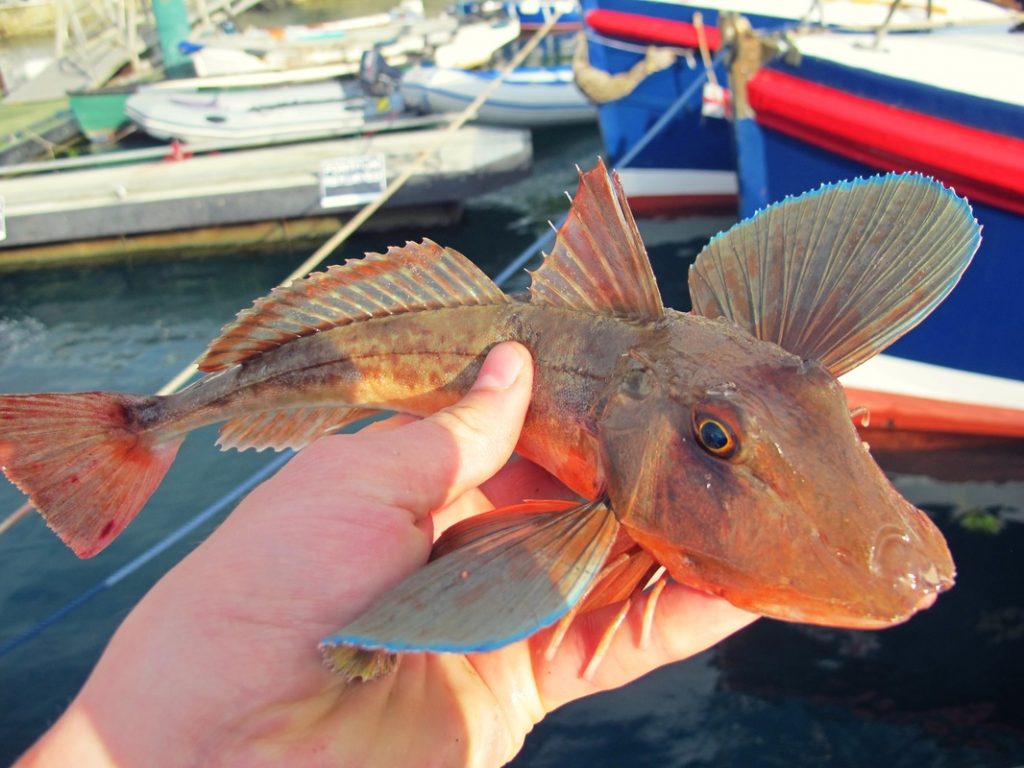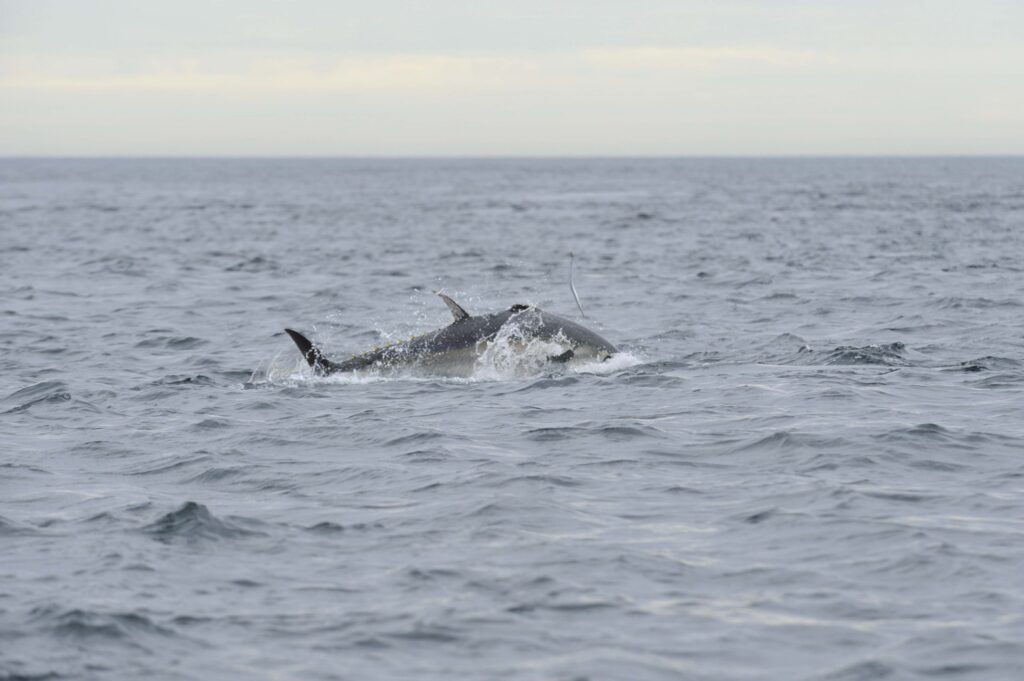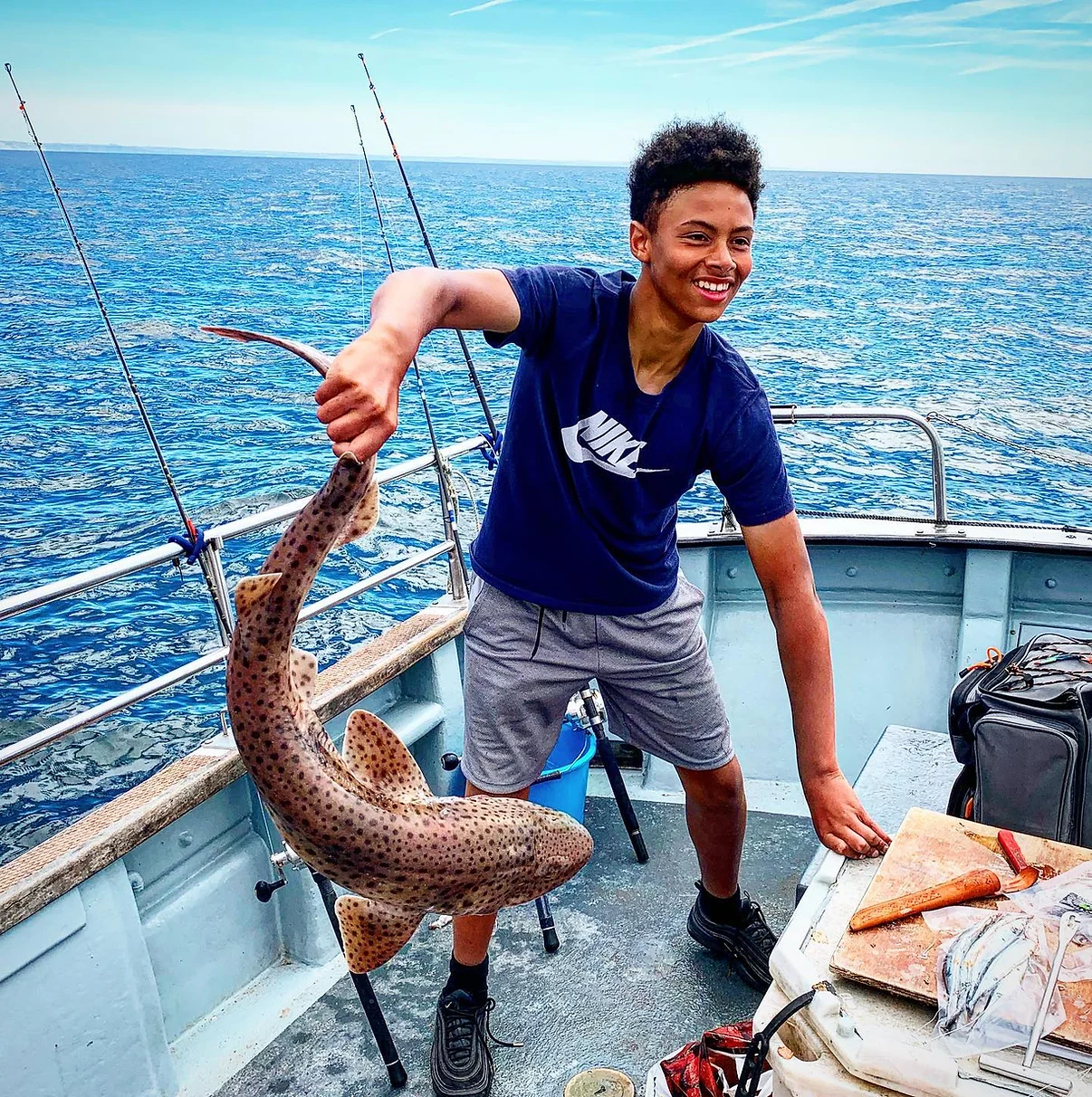
Fishing in Padstow | A locals guide
Padstow has an extraordinary range of fishing – you can go shore fishing along the rugged coastline, fish the Camel estuary or from surf beaches. There are also boat fishing trips you can hop aboard from the harbour. We interviewed local fishing guide, Lee Wicks, of the Emma Kate. But first, I’ll run through the shore fishing opportunities in the area both for beginners and experienced anglers.
Fishing gear for the Padstow area
Fishing near Padstow harbour
Growing up, we always targeted mackerel from the harbour wall in summer, or fished further down along the camel trail inside the estuary itself. The harbour itself is a not a good spot for visitors, as you require a permit from the harbour master to fish there. For locals using light modern lure gear it’s easy to fish the area without getting in anyones way, but most would avoid the harbour in the school holidays.
The camel estuary more broadly environment is perfect for mullet, flounder and dogfish. These tend to be targeted with beach casting gear, leaving baits on the bottom in the channels. You can see where the deeper-water channels are at low tide, twice a day, if you wonder down along the camel trail. This also requires the permit mentioned above.
Directly down the harbour wall you’ll also find species that most don’t realise exist! Scorpion fish, dragonette, red mullet – there are some funky looking fish that live down there. Use rag worm or a rag worm imitation like Marukyu Isome if you want to plan ahead and don’t want stinking bait. Simply thread this imitation worm onto a small size 8 hook and drop it down the harbour wall with a little weight. Hold the line tight and wait for bites.
This style of fishing is great fun, especially with kids as you catch a wider variety of species and you’re very likely to catch them. The fish you catch are unlikely to be edible. A pair of disgorgers are essential so you can easily unhook these fish.
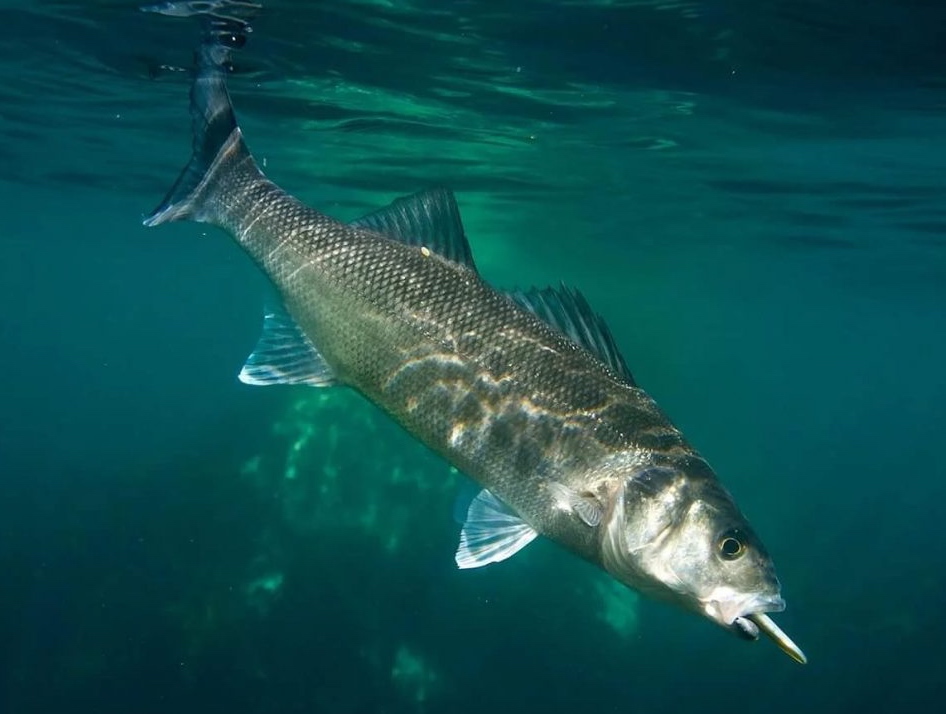
Bass fishing near Padstow
If you leave Padstow and explore the rugged coastline surrounding it, you can find some of the best rock fishing for bass in the whole of the UK. This style of fishing requires more specialist lure fishing gear if you want to have a good chance at fish, and for safety it’s essential to understand the tides, check the weather and have good balance on rocks etc!
What makes the area around Padstow so good for bass fishing is the water movement. Surf beaches churn up the seabed, lifting crabs up into the gobs of the bass. Small baitfish get disoriented. Bass use the powerful tidal currents around headlands as conveyor belts of food. Naturally then, bass fishing often involves fishing in potentially dangerous waters. The rewards of exploring the coast with some decent fishing kit are extraordinary though, and it’s your only hope of avoiding the crowds in summer.
If you’re keen to do this, you might like our guide to bass fishing.
Padstow boat fishing trips
We interviewed Lee Wicks, skipper of the Emma Kate which is moored in Padstow harbour. He had a wealth of information about the local area, which is of particular use to travellers and species hunters.
You can visit the Emma Kate fishing charters website here.
What would you say is your boats speciality?
Well, one thing we do is run the North Cornwall Species League. It’s run with two boats, one out of Padstow and one out of Newquay. The North Cornish coast is the better one to catch the most different species of fish by boat. The aim with the league is to catch as many species as you can, with points based on the size of the fish relative to the maximum size that species grows to. We’ve got about 40-50 league anglers. The north coast will not be beaten on species!
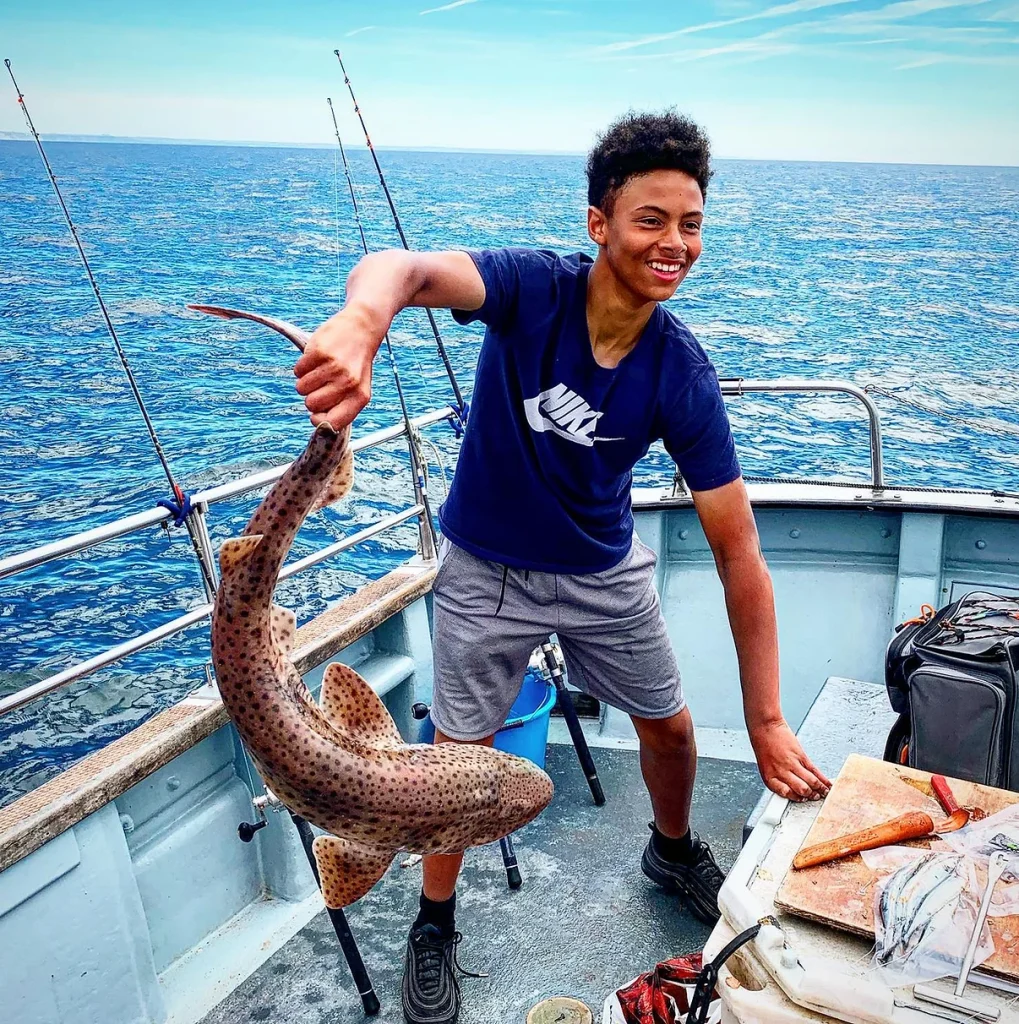
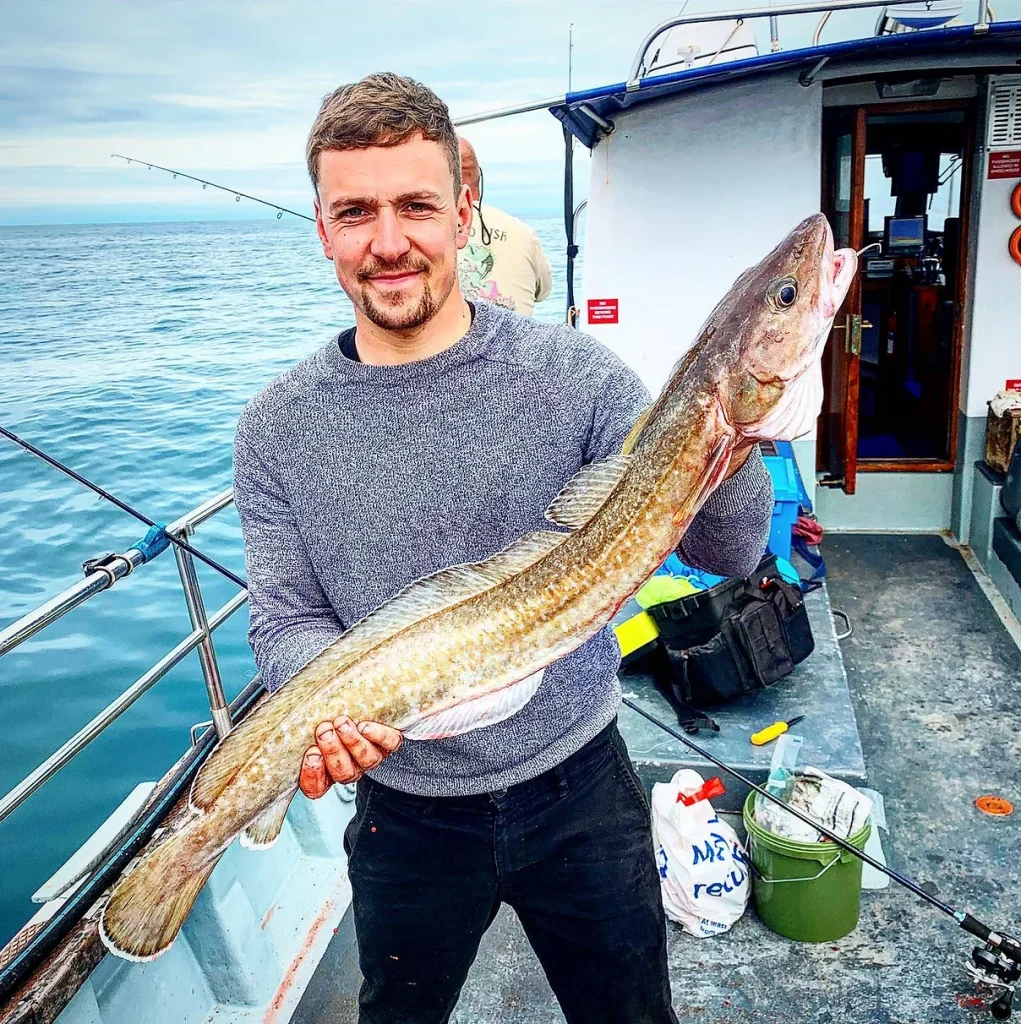
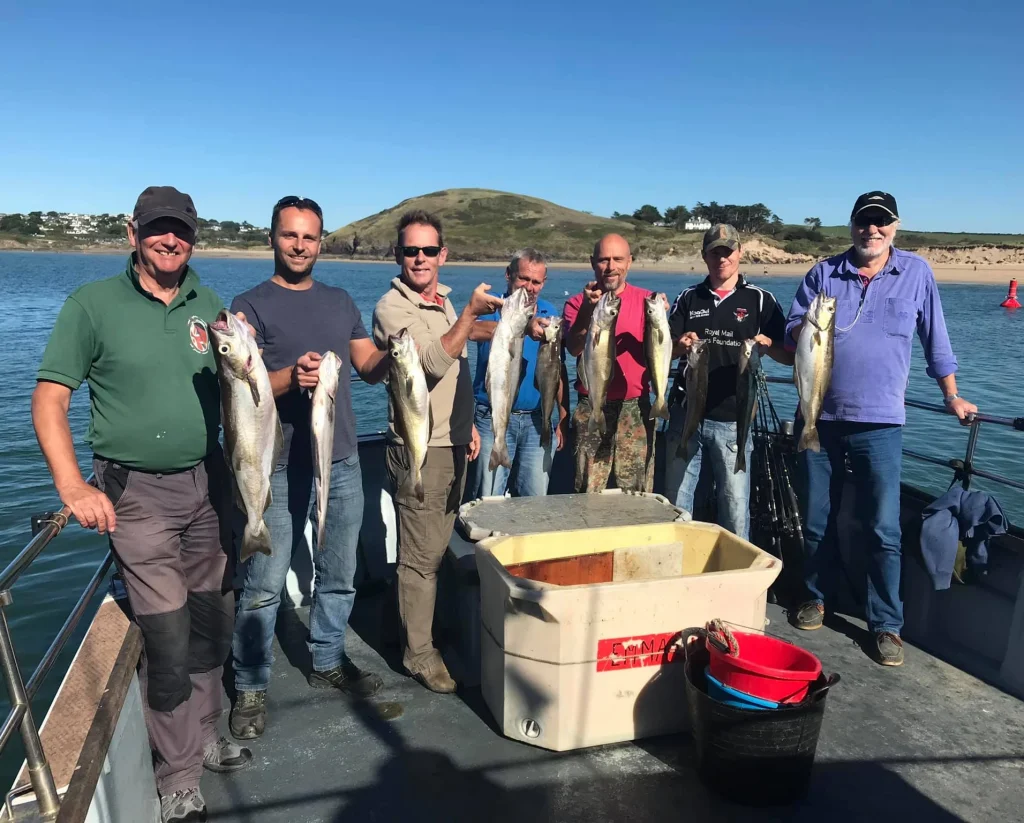
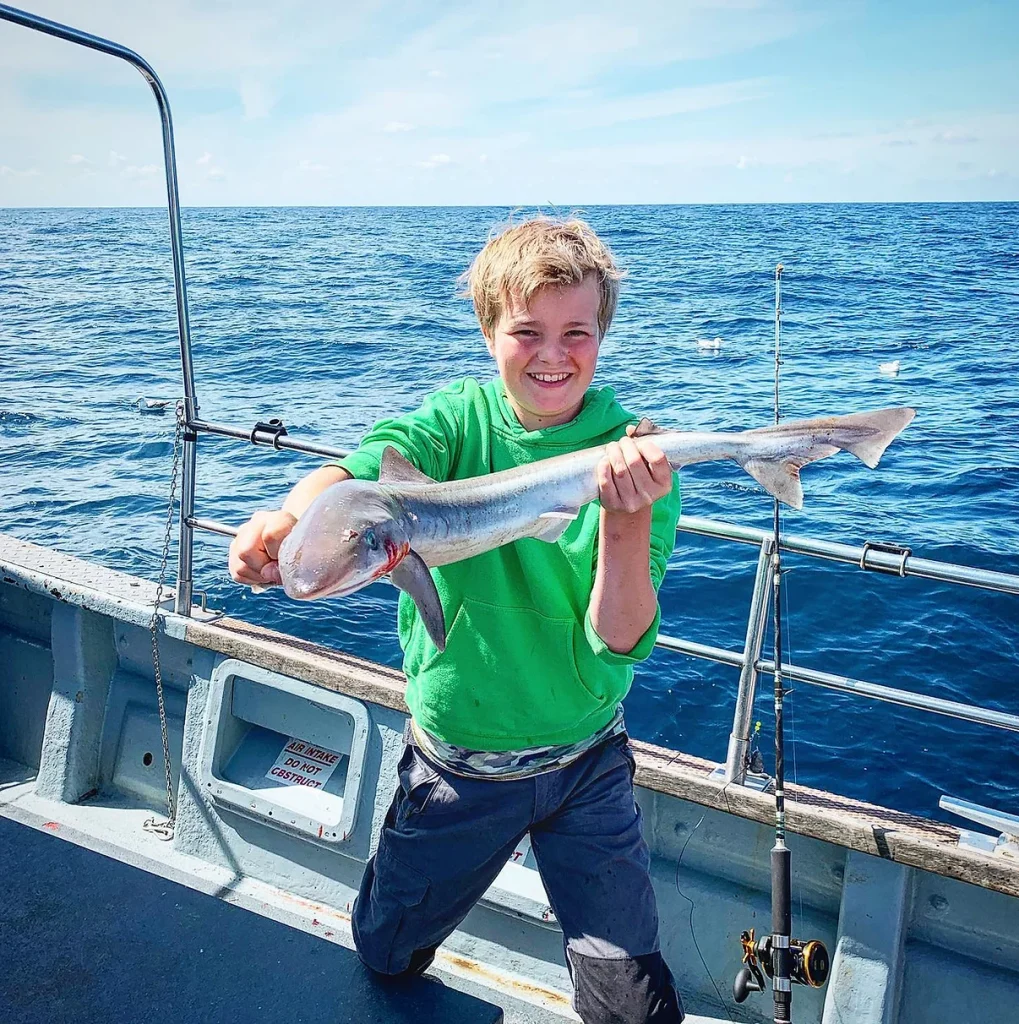
Thanks to LEE WICKS, Skipper of the Emma Kate, for sharing these photos with us.
What kind of rigs are you using out of Padstow harbour?
To be honest, it sounds daft, but I think over the course of 12 months I’ve seen that baited feathers takes a lot of beating. A lot of people say they don’t want to downgrade their beautiful pennel rig with a load of beads. They think baited feathers are like going on a glorified mackerel trip. I say, it doesn’t matter – it’s catching fish. Tinsel baited feathers – scratching the bottom with three tinsel feathers, bit of mackerel on one hook, squid on another and worm on the third. Then the fish have a choice of bait. If the bait falls off, you’ve still got the silver tinsel on there which also attracts fish.
What’re the waters like out of Padstow?
It depends on the tide and the wind. This coast has quite a lot of tide, compared to the south coast. We get up to 8m of tide. The south coast gets 4-5m. The drift here is twice as fast.
On dead neap tides we can get away from the harbour pretty much all day – as long as it doesn’t drop below 2.2m of water. That’s the outer quay – obviously the inner quay has got the tidal gates, so that opens roughly 2 hours either side of high water. It’s a very tidal estuary.
I don’t tend to fish wrecks so much anymore. We have thousands and thousands of wrecks but they all got netted out years ago.
If you’re not fishing the wrecks, what type of ground are you fishing?
Rough ground. Inshore and offshore reefs. It depends on the time of the year. In winter, the fish are normally outside in deeper water. We get so much turbulence in the water with the storms that most fish go outside. They then come back in in June time to breed. They lay their eggs on the inshore reefs. They try to hide their eggs from predators. Then they go back out to deeper water again. In summertime, we fish more inshore. In winter we go offshore. It would be better if it was the other way round for us, with the weather!
Where we go fishing depends where the commercial boys have been. I talk with a commercial guy who lets me know where he’s been so we can avoid those areas.
How deep is the water off Padstow?
We fish 200ft deep water. On the South coast off King Harry ferry you’ve got 200ft of water right there, so our waters not that deep really. We have to go 10 miles off to get that. In 400ft of water, as long as you can hold the bottom, you’re good with the baited feathers. We use 8oz to 12oz leads. When the tide is slowing, 12 ounces.
When we’re fishing inshore, the tides are normally smaller. Wherever there is headland, like trevose head, you know there’s going to be a lot of tide. Lands end, the Lizard. There will be stupid amounts of tide. It just races. You’ll get slack tide for half an hour, then it’s racing again. You actually need more weight when fishing inshore here because of these tides. We can only anchor inshore 6m and less, so we tend to fish on the drift.
How do you recommend people cook their catch?
We catch a lot of pollack. It’s as good as cod for eating in my words. Pure white fish. A lot of people think it’s tasteless, but there’s a right way to prepare them.
Any white fish is better the day after you caught it. Oily fish like mackerel fish and pilchard are always best the same day you catch them. Any white fish should be filleted, then have a bit of salt put on the flesh side, and put in the fridge. That pulls the moisture out of the fish. When you pull all the moisture out of the fish, it concentrates the flavour. It seems daft putting salt onto a fish out of sea, but it does work. Give it 24 hours.
Thank you to Lee Wicks for this interview.
Padstow Fish Species
Cod, Pouting, Poorcod, Whiting – all these will be caught in numbers from Padstow harbour in winter while bottom fishing at night. In particular, you can expect a lot of pouting and Pollack, due to the large number of lug worm in the estuary. From boat, you will catch much larger fish and have better access to species like cod and the fatter Pollack, which linger around Cornwall’s many shipwrecks.
Flat fish
The UK record flatfish have historically come from Cornwall. Ragworm or lugworm on the bottom will turn up fine specimens from Padstow harbour and fishing in the Camel Estuary is one of the best places in Cornwall. Plaice, flounder and dab are the mainstay. As you may be used to, you’ll catch more dab than you want to. More dogfish too. There’s just no avoiding these species, but get through enough and you’ll get your place. While targeting these you might pick up some other strange species like Three Bearded Rockling. Fishing on the North Coast of Cornwall turns up many surprise species, from conger to rockling and suckerfish.
Gurnard
Padstow harbour is an excellent spot for gurnard. You will catch Red Gurnard, plenty of Tub Gurnard and Grey Gurnard too. It’s bizarre that this species used to be seen as being so unworthy that it was only used in crab pots because it tastes amazing. It might have something to do with the crab-like legs growing out of their necks or the way they are relatively difficult to fillet. If you ever see unwater footage of this species, they literally crawl with those legs like crabs. What a freaky fish!
Mackerel
In the summer months, you can expect to catch mackerel from the harbour quite a lot of the time. They aren’t always there since they need to come up the estuary somewhat from the sea.
Fishing for mackerel is not as good for instance as it would be from Mevagissey or Newlyn. However, when the mackerel are in, they are really in. Expect big numbers and swarm like frenzies on big spring tides on summer evenings. Late spring and early summer is best. Mackerel caught tend to be smaller and the summer months roll on. The best mackerel are caught in early Spring as these are the big fatties that have survived winter and are plump from a previous summer feeding.
Catsharks
The River Camel is particularly unique in that it is home to rare species of Cat Shark. Cat sharks are a family that includes species like the Lesser Spotted Dog Fish and the Greater Spotted Dogfish (Bull Huss). But these species have rarer and far more interesting cousins in the family. Tope, Smoothhound, Starry Smoothhound – these species of Catshark grow far larger. Harmless of course, with their sand-papery mouths, they are not what people think of when they think ‘shark’. Nevertheless, they are sharks and you can catch them from Padstow harbour and elsewhere in the estuary. If you visit at low tide, you will be able to see areas of deeper water. These species are fond of very deep areas of estuaries so seek these out during a spring low tide and you will know where to fish as the tide pushes in.
Of course, just like for the bog-standard dogfish, you will want to be fishing at night. These fish do not want to see sunlight. These species are endangered and should not be actively targeted, if you catch one take the greatest care of them and return them.
Padstow is sat within the Camel Estuary, so the water is brackish – a mix of fresh water and seawater. This explains why you’ll catch so many estuary-loving species, including slightly rarer species like Red Mullet which love this environment. The ground is very clean, with expansive mudflats and sandy patches. This is lugworm territory and sandeel territory. There must be millions of sandeel each year buried in the mudflats with their little faces poking through, keeping an eye out for the bass that could end their days!
You won’t be losing very much tackle in Padstow unless you get caught in ropes for the boats in the harbour. The main thing to watch out for is the strong currents. When all the freshwater flooding into the sea from the Camel is combined with an outward-moving tide, your bottom fishing rigs are likely to get pulled around, causing annoying tangles.
Fishing Ground Type
Excerpt from the classic (but old) book, ‘Fishing in Cornwall‘
“The whole of the Camel estuary from about Padstow seaward offers excellent fishing, whether from a boat or from a variety of places on either shore. The estuary is a great haunt for bass and good sites on the west side are St. Saviour’s Point (below the War memorial), the rocks by St. George’s Cove, Gun Point, and along the cliffs out by the coastguard houses on Stepper Point. In each case, it is worth a low tide reconnaissance to select likely spots. On the east side, the shore from Rock northwards is worth trying, particularly the rocks at Trebetherick Point where there is good tidewater. For boat fishing, the Camel is ideal and very large catches are made of bass, mackerel, conger, pollack and big flat-fish, etc.”
Q&A
Where can I fish near Padstow?
The coastline surrounding Padstow is excellent for fishing. You have Constantine, Mother Ivies and other surf beaches nearby which are great for bass. Better, even, than the harbour itself. This coastline is
rugged and brutal so vigilance and common sense is required to keep safe. The water from many local rock marks is very deep, so is excellent for deeper water species like huss and conger.
Can you fish in Padstow harbour?
Yes, you can fish in Padstow harbour for species like mullet, bass, flatfish and gurnard. As of 2022 you require a permit.
Is fishing in Padstow harbour good?
Fishing from Padstow harbour is very good with the right gear, but with the wrong gear it’s almost unfishable. Take a look at the recommended tackle mentioned above.
Is North Cornwall good for bass fishing?
North Cornwall has excellent bass fishing. It is not as good as the Sicily Islands, Scotland or Ireland, but is otherwise the best in the country by far. The water is about a degree warmer down here and the coastline is rugged and rough, which is ideal for a species that preys on disoriented morsels lost in the surf. The best lures to use include the Patchinko and Savage Gear Sandeels.

